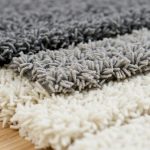Existen distintas clases de tapetes de plástico y se definen dependiendo del material con el que se haya fabricado cada tapete plástico.
Tapetes de hule: Estos tapetes están fabricados con hule y suelen ser antiderrapantes e impermeables.
Tapetes de caucho: Los tapetes de caucho se suelen utilizar para sustituir a los pisos comunes, son una gran alternativa para reducir costes de mantenimiento.
Tapetes híbridos: Se les podría considerar como tapetes híbridos, estos son los que utilizan distintos materiales en su fabricación, si bien se suele combinar hule con otro material sintético, también se mezcla el caucho con otros materiales. Ver aquí tapetes para ganado.
Por otra parte también podemos encontrar los tapetes que están fabricados con el plástico de toda la vida, el mismo plástico se utiliza tanto para fabricar los pelos del tapete como para fabricar la base, lo que hace su fabricación más sencilla y por tanto más barata que los demás tapetes.










